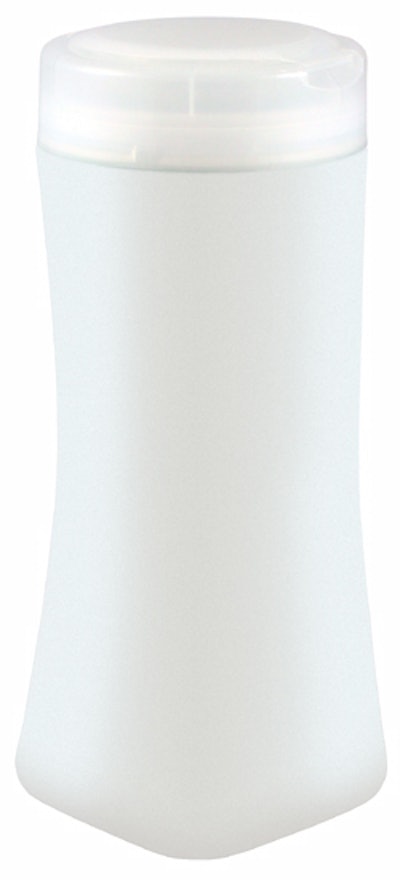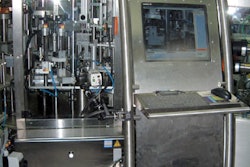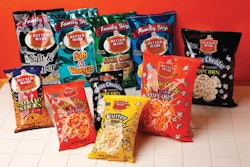
For a small company based in the tiny town of Fredonia, WI, Guy & O’Neill, Inc. is mighty big on sustainability. The contract manufacturer/packager is in the process of rolling out its Eco-Choice platform of customizable wet wipe products in innovative, sustainable containers for retail, medical, and industrial customers.
Eco-Choice is designed to create sustainable wet wipe solutions by reducing the hydrocarbon footprint of traditional wet wipe design, manufacturing, and packaging.
Eco-Choice reaches upstream as well, where the company and its raw material suppliers employ energy-saving manufacturing/production processes.
Guy & O’Neill’s nonwoven Eco-Choice wipes are made from natural fibers and renewable resources, such as PLA (polylactic acid), viscose, pulp, and/or cotton, as opposed to petroleum-based resources. Liquid formulations focus on using a multistep water purification process that helps reduce the amount of preservatives necessary in the formulations that make wet wipes wet. These formulations use natural ingredients and botanicals that are chlorine-, formaldehyde-, and phosphate-free, with no artificial colors or fragrances.
Wipes are then packaged in source-reduced materials, made from renewable resources or recyclable materials, rather than in traditional petroleum-based packaging.
On its Web site, Guy & O’Neill refers to itself as a “pioneer in peel-and-reseal wet wipe manufacturing.” Company president and CEO Jon Alexander says, “We are stewards of our industry. We have to lead our customers toward sustainable wet wipes that deliver performance, and integrity, and that are cost-competitive with current materials.
“Part of our company’s charter was to make Eco-Choice a sustainable program that could gain market traction and help enact change. During the past two years, we’ve put a tremendous amount of research into package design, developing patents on these packages. We worked with supplier-partners in all areas of our business, from the formulations and chemicals to the nonwoven wipes to the packaging.”
Alexander says that Guy & O’Neill suppliers have changed how they manufacture nonwoven wipes materials, how they recycle water, and how they burn some of their scrap and turn it into steam to help power their plants. “We’re looking at the larger carbon footprint of how the product is made, not just at the product itself,” he says. At Guy & O’Neill, Alexander says the company is changing everything from its waste disposal to how it is recycling its waste on-site.
Although Guy & O’Neill continues to offer more traditional wet wipes, its Eco-Choice wipes and packages give its customers a sustainable alternative. There are four primary package configurations that fall into the Eco-Choice platform: a Square-to-Round container, a Pop-up tub, a Flex canister, and a Stand-up pouch.
All of these containers, which are described below, are either being sold at retail, or are on the verge of appearing commercially. Confidentiality agreements prevent Guy & O’Neill from divulging customer names. And for competitive reasons, the company prefers not to mention material suppliers.
Here, then, are brief descriptions of the four Eco-Choice containers:
Square-to-Round
“This is totally unique compared with the plethora of look-alike wet wipes containers on the shelf today,” Alexander believes. “It provides complete differentiation.”
The container’s (photo A) square bottom allows for a front facing on the shelf. It then tapers at the waist before it becomes round at the neck. It’s designed to accommodate a full-body, shrink-sleeve label and offers multiple neck finishes to accommodate different closures.
“It’s blow-molded of up to 25-percent post-consumer high-density polyethylene” says Alexander. “Because traditional labeling of this odd-shaped container would be especially challenging, we are promoting the use of a shrink label that is easily removed from the HDPE container during the recycling process. The shrink label also provides top-to-bottom, 360-degree graphics space for additional copy.”
Pop-up tub
A horizontal rather than vertical container, this 100-percent post-consumer recycled PET container is thermoformed by either of two different suppliers. The Pop-up tub offers two different methods of access to the wipes. One is a push-button version (photo B1) that works much like a tissue box so that when a consumer removes one from the tub for use, the next one presents itself.
“It’s made from soda bottles,” says Alexander. “It looks like metal, but it’s RPET that’s vacuum-metallized to resemble an upscale tissue container. The whole idea here is to make the container attractive and the product accessible, so the consumer can leave it out and not hide it. It’s easy to open and reclose, so the product doesn’t dry out.”
Guy & O’Neill touts the Pop-up tub as a 70-percent reduction in package weight compared to the 62-g canister-and-lid combination common to wet wipes packages.
The second Pop-up tub variety (photo B2) again provides an attractive “designer”-like tissue box. A key difference with this version is that instead of using a push-button opening-and-closing device, it uses a peel-and-reseal auto-closing RPET flap. Again, once the opening flap is released, it self-closes the package and prevents moisture from drying out the wet wipes inside.
Once that package is empty of wipes, the consumer is encouraged to recycle the entire package again as it is made entirely from PET resin. “The bottom seal film contains all the brand graphics, trade information, the UPC code, and graphics,” says Tarry Zielinski, director of sales. “The consumer doesn’t see this information unless he or she picks up the tub. That allows consumers accessibility, and they can store the tub where they use it, rather than hiding it somewhere.”
Flex canister
From an environmental standpoint, perhaps none of Guy & O’Neill’s Eco-Choice offerings is “greener” than its Flex canister (photo C), which the company says represents a 42-percent source reduction by weight compared with standard wet wipes canisters.
Zielinski notes, “Consumers have a perception that when they discard a standard wipes container, they’re throwing a lot away. The Flex canister allows you to pull off wipes as you might do with a roll of paper towels. When you’ve used all the wipes, you can compact the film-based canister by hand to discard it.”
The injection-molded HDPE Flex canister “offers us excellent moisture vapor transmission ratio [MVTR] properties, and substantial product differentiation,” adds Zielinski.
He explains that the three-piece Flex canister includes a hinged injection-molded polypropylene cap and collar that when ultrasonically sealed to the cap entraps the Flex canister. The roll of wipes stays in place, and the canister is stored upside-down on the cap, requiring the consumer to close it after using a wipe.
Alexander adds, “The package provides a hermetic seal not only through the distribution process, but also throughout the use of the product so that the wipes don’t dry up during use, as is often the case with traditional rigid canister-and-lid containers, where the top is left open and you get a ‘wicking’ effect that dries up the wipes.”
Stand-up pouch
Traditional wet wipes have been sold in resealable lay-flat packs for years, but Guy & O’Neill’s bottom-gusseted Stand-up pouch (photo D) offers a fourth innovative Eco-Choice package.
“We have worked with our suppliers to develop laminated structures in which layers are all made of 100-percent polyester or polyethylene film, so that they’re easily recyclable,” says Alexander. “We’ve created films that run on our standard horizontal form/fill/seal equipment, with modifications to the sealing process. They are available in clear or opaque varieties. They offer excellent MVTR and may be printed flexo or gravure in up to eight colors, using soy-based inks.”
Sustainable packaging
Depending on the package configuration, Guy & O’Neill wet wipes may be sold in quantities from one to 500. At the company’s Fredonia plant, eight packaging lines are employed for wipes products, including Eco-Choice and traditional offerings. A canister line is the latest, added within the past six months.
“The line automatically wets the wipes, puts them in the canister, adds a lid, labels the canister, date-codes it, and packs it into cases,” Alexander explains. “The lines are dedicated to different pack volumes,” he adds. “We do all in-house blending of formulations and load them directly onto the wipes prior to packaging. That way we don’t have to use an outside service.”
Guy & O’Neill’s goal is to lead the wet wipes business into sustainability, through manufacturing processes, wipes materials, formulations, and packaging.
“We spent a tremendous amount of time and resources developing integrated systems so customers can say their product is sustainable and green compared to competitive wipes,” says Alexander.
Alexander recognizes that there is work to be done when it comes to the environment and post-consumer practices.
“The majority of wipes disposed of in North America end up in landfills. A lot of people want a biodegradable wipe, but unless you have an industrial composting program, biodegradability is really not an option,” he says. That said, the use of chlorine-free bleached, pulp fibers, viscose, and PLA provide pro-environmental material options. “And in the future,” Alexander believes, “PLA will be made from things other than corn, such as switchgrass and other feedstock derivatives.
“The trick is to create substrates and formulations that will do the job and run on standard production and packaging equipment. People are quick to say they can offer a sustainable product, but they’ll have to charge more for it. We are developing materials and packaging that offer at least the same benefits as traditional wet wipes, yet are sustainable, and are sold at a cost that’s on par or less than the cost of virgin materials.
“Nobody has seen these kinds of packages and products in the wet wipes area,” adds Alexander. “When you look at how the packaging of wipes is done today, it’s such a stagnant market. We believe this sustainable approach will create a huge shift in the wet wipes business that will take over our marketplace in the next five years and change the way wet wipes are manufactured and packaged.”
To view the sidebar to this article "Eco-Choice and Wal-Mart’s Packaging Scorecard", go to: packworld.com/view24774






















